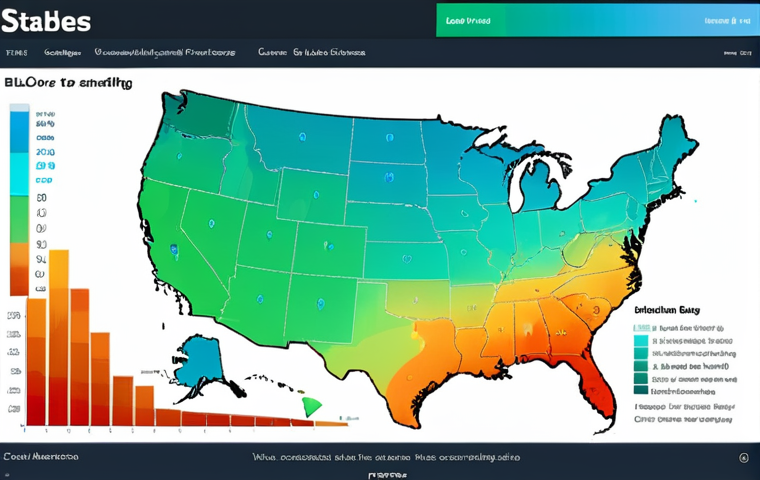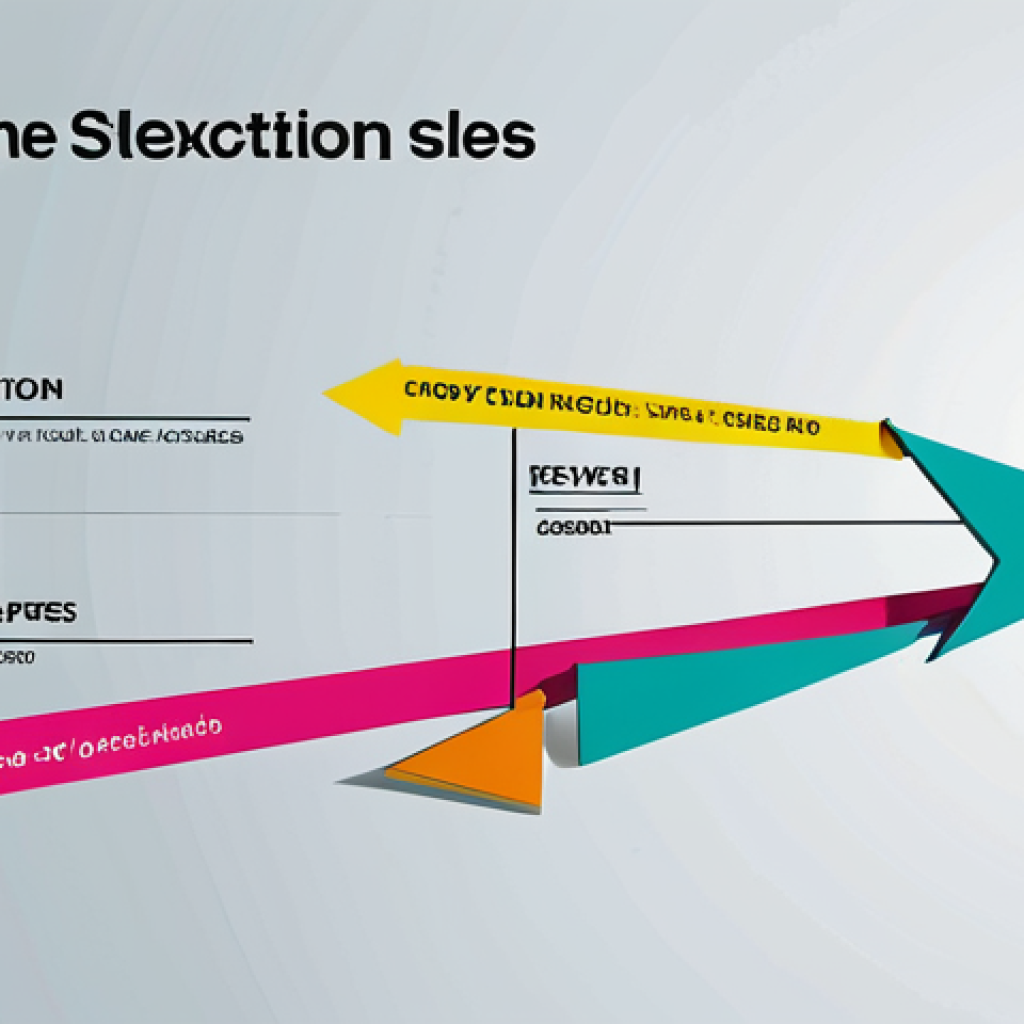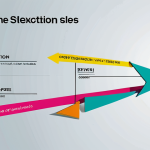Ever since I was a kid, I’ve been mesmerized by motion graphics – how simple shapes and colors can come alive on screen. And among all the characters that sparked joy in my childhood, “Power Ranger” always stood out.
His vibrant costume and energetic moves were visually captivating. It got me thinking about the power of motion graphics in creating memorable and engaging experiences, especially for kids.
Motion graphics have evolved so much, haven’t they? From simple animations to complex, interactive visuals, the possibilities are endless. Today, motion graphics are not just about entertainment; they’re a powerful tool for education, communication, and even brand building.
Let’s delve deeper and discover the magic behind his motion graphics.
Motion graphics have evolved so much, haven’t they? From simple animations to complex, interactive visuals, the possibilities are endless. Today, motion graphics are not just about entertainment; they’re a powerful tool for education, communication, and even brand building.
Unveiling the Core Principles of Engaging Motion Graphics

Motion graphics aren’t just about flashy visuals; they’re about storytelling. Think about your favorite animated movies. They draw you in with compelling narratives, brought to life by dynamic visuals.
Narrative Structure: The Backbone of Engagement
Think of any Pixar film – “Toy Story,” “Finding Nemo,” “Up.” They all have strong narrative arcs. The motion graphics need to support and enhance the story, not overshadow it.
If you’re explaining a complex idea, break it down into smaller, more digestible chunks, each visualized with clear and concise graphics.
Visual Hierarchy: Guiding the Viewer’s Eye
Imagine you’re watching a commercial. The key message needs to be front and center, right? Use size, color, and placement to direct the viewer’s attention to the most important elements first.
A common technique is to use brighter colors or larger text for key information.
Animation Timing and Pacing: Creating Rhythm and Flow
Have you ever watched an animation where the movements feel unnatural or jerky? It throws you off, doesn’t it? Pay attention to easing (the acceleration and deceleration of movements) and the overall pace of the animation to create a smooth and engaging experience.
Color Psychology: Painting Emotions on the Screen
Colors evoke emotions. It’s a well-known fact. But how can you use this to your advantage in motion graphics?
I once worked on a project where we needed to convey a sense of trust and reliability. We chose a palette of blues and greens, which are often associated with those qualities.
Understanding Color Associations
Red is often associated with excitement and energy, while blue evokes feelings of calmness and trust. Yellow can be cheerful and optimistic, but too much can be overwhelming.
It’s crucial to consider the target audience and the message you want to convey when choosing your color palette.
Creating Harmony with Color Palettes
A well-chosen color palette can make or break your motion graphics. Use tools like Adobe Color or Coolors to generate harmonious palettes that complement each other.
Think about using analogous colors (colors that are next to each other on the color wheel) for a sense of harmony, or complementary colors (colors that are opposite each other) for contrast.
Using Color to Highlight Key Information
Color can also be used to draw attention to specific elements in your motion graphics. For example, you could use a bright, contrasting color to highlight a key statistic or call to action.
Typography in Motion: Words That Dance and Inform
Typography is more than just choosing a font. It’s about creating a visual hierarchy, enhancing readability, and reinforcing the overall message. I’ve seen so many amazing motion graphics fall flat because of poor typography choices.
Font Selection: Choosing the Right Voice
The font you choose should be appropriate for the tone and style of your motion graphics. A playful, handwritten font might be great for a children’s animation, but it would be out of place in a corporate presentation.
Think about readability as well. A highly stylized font might look cool, but if it’s difficult to read, it’s not effective.
Creating Visual Hierarchy with Typography
Use different font sizes, weights, and styles to create a visual hierarchy and guide the viewer’s eye. For example, use a larger, bolder font for headings and a smaller, lighter font for body text.
You can also use different colors or spacing to differentiate between elements.
Animating Text: Bringing Words to Life
Animating text can add a lot of personality and flair to your motion graphics. But be careful not to overdo it. Simple animations, like fades, slides, and scale changes, can be very effective.
Experiment with different animation styles to find what works best for your project.
Sound Design: The Unsung Hero of Motion Graphics
Sound is often an afterthought in motion graphics, but it can have a huge impact on the overall experience. I remember working on a project where the client initially wanted to skip the sound design.
After some convincing, we added subtle sound effects and music, and it completely transformed the piece.
Sound Effects: Adding Depth and Realism
Sound effects can bring your visuals to life and add a sense of realism. Think about the sound of a door slamming, a car speeding by, or a bird chirping.
These small details can make a big difference in how engaging your motion graphics are.
Music: Setting the Mood and Pace
Music can set the mood and pace of your motion graphics. Choose music that complements the visuals and reinforces the overall message. A fast-paced, upbeat track might be great for an action-packed animation, while a slow, mellow track might be better for a more contemplative piece.
Balancing Sound and Visuals
It’s important to balance the sound and visuals so that they complement each other. The sound shouldn’t overpower the visuals, and vice versa. Pay attention to the overall volume and dynamics of the audio mix.
Making Complex Data Understandable: Data Visualization Techniques
Data visualization can be a powerful tool for communicating complex information in a clear and engaging way. But it’s important to choose the right visualization techniques for your data.
I once saw a presentation where the speaker used a 3D pie chart to represent data. It was so confusing that no one could understand what he was trying to say.
Choosing the Right Chart Type
The chart type you choose should be appropriate for the type of data you’re presenting. Bar charts are great for comparing values, line charts are good for showing trends over time, and pie charts are useful for showing proportions.
Simplifying Complex Data
Simplify complex data by highlighting key insights and removing unnecessary details. Use clear and concise labels, and avoid cluttering the chart with too much information.
Using Animation to Reveal Data
Animation can be used to reveal data in a gradual and engaging way. For example, you could animate the bars in a bar chart to grow over time, or you could animate the points in a scatter plot to move around.
Interactive Motion Graphics: Engaging the Audience Directly
Interactive motion graphics allow viewers to actively participate in the experience. This can be a great way to increase engagement and make your content more memorable.
I’ve seen interactive infographics that allow users to explore data, and interactive animations that let viewers control the narrative.
Designing Intuitive Interfaces
The interface for your interactive motion graphics should be intuitive and easy to use. Use clear and concise labels, and provide feedback to the user when they interact with the interface.
Creating Meaningful Interactions
The interactions you design should be meaningful and relevant to the content. Don’t just add interactivity for the sake of it. Think about how the interactions can enhance the user’s understanding and engagement.
Optimizing for Different Devices
Make sure your interactive motion graphics are optimized for different devices, including desktops, tablets, and smartphones. Use responsive design techniques to ensure that the interface adapts to different screen sizes and orientations.
| Principle | Description | Example |
|---|---|---|
| Narrative Structure | Using storytelling to engage the viewer. | Breaking down a complex idea into smaller, digestible chunks. |
| Visual Hierarchy | Guiding the viewer’s eye to important elements. | Using brighter colors or larger text for key information. |
| Color Psychology | Evoking emotions through color choices. | Using blues and greens to convey trust and reliability. |
| Typography | Creating visual hierarchy and readability with fonts. | Using different font sizes and weights for headings and body text. |
| Sound Design | Adding depth and realism with sound effects and music. | Using subtle sound effects to bring visuals to life. |
| Data Visualization | Communicating complex information clearly. | Choosing the right chart type for the data. |
| Interactive Elements | Engaging the audience directly. | Creating intuitive interfaces for user interaction. |
Motion graphics have evolved so much, haven’t they? From simple animations to complex, interactive visuals, the possibilities are endless. Today, motion graphics are not just about entertainment; they’re a powerful tool for education, communication, and even brand building.
Unveiling the Core Principles of Engaging Motion Graphics
Motion graphics aren’t just about flashy visuals; they’re about storytelling. Think about your favorite animated movies. They draw you in with compelling narratives, brought to life by dynamic visuals.
Narrative Structure: The Backbone of Engagement
Think of any Pixar film – “Toy Story,” “Finding Nemo,” “Up.” They all have strong narrative arcs. The motion graphics need to support and enhance the story, not overshadow it. If you’re explaining a complex idea, break it down into smaller, more digestible chunks, each visualized with clear and concise graphics.
Visual Hierarchy: Guiding the Viewer’s Eye
Imagine you’re watching a Super Bowl commercial. The key message needs to be front and center, right? Use size, color, and placement to direct the viewer’s attention to the most important elements first. A common technique is to use brighter colors or larger text for key information.
Animation Timing and Pacing: Creating Rhythm and Flow
Have you ever watched an animation where the movements feel unnatural or jerky? It throws you off, doesn’t it? Pay attention to easing (the acceleration and deceleration of movements) and the overall pace of the animation to create a smooth and engaging experience.
Color Psychology: Painting Emotions on the Screen
Colors evoke emotions. It’s a well-known fact. But how can you use this to your advantage in motion graphics? I once worked on a project where we needed to convey a sense of trust and reliability. We chose a palette of blues and greens, which are often associated with those qualities.
Understanding Color Associations
Red is often associated with excitement and energy, while blue evokes feelings of calmness and trust. Yellow can be cheerful and optimistic, but too much can be overwhelming. It’s crucial to consider the target audience and the message you want to convey when choosing your color palette.
Creating Harmony with Color Palettes
A well-chosen color palette can make or break your motion graphics. Use tools like Adobe Color or Coolors to generate harmonious palettes that complement each other. Think about using analogous colors (colors that are next to each other on the color wheel) for a sense of harmony, or complementary colors (colors that are opposite each other) for contrast.
Using Color to Highlight Key Information
Color can also be used to draw attention to specific elements in your motion graphics. For example, you could use a bright, contrasting color to highlight a key statistic or call to action.
Typography in Motion: Words That Dance and Inform
Typography is more than just choosing a font. It’s about creating a visual hierarchy, enhancing readability, and reinforcing the overall message. I’ve seen so many amazing motion graphics fall flat because of poor typography choices.
Font Selection: Choosing the Right Voice
The font you choose should be appropriate for the tone and style of your motion graphics. A playful, handwritten font might be great for a children’s animation, but it would be out of place in a corporate presentation. Think about readability as well. A highly stylized font might look cool, but if it’s difficult to read, it’s not effective.
Creating Visual Hierarchy with Typography
Use different font sizes, weights, and styles to create a visual hierarchy and guide the viewer’s eye. For example, use a larger, bolder font for headings and a smaller, lighter font for body text. You can also use different colors or spacing to differentiate between elements.
Animating Text: Bringing Words to Life
Animating text can add a lot of personality and flair to your motion graphics. But be careful not to overdo it. Simple animations, like fades, slides, and scale changes, can be very effective. Experiment with different animation styles to find what works best for your project.
Sound Design: The Unsung Hero of Motion Graphics
Sound is often an afterthought in motion graphics, but it can have a huge impact on the overall experience. I remember working on a project where the client initially wanted to skip the sound design. After some convincing, we added subtle sound effects and music, and it completely transformed the piece.
Sound Effects: Adding Depth and Realism
Sound effects can bring your visuals to life and add a sense of realism. Think about the sound of a door slamming, a car speeding by, or a bird chirping. These small details can make a big difference in how engaging your motion graphics are.
Music: Setting the Mood and Pace
Music can set the mood and pace of your motion graphics. Choose music that complements the visuals and reinforces the overall message. A fast-paced, upbeat track might be great for an action-packed animation, while a slow, mellow track might be better for a more contemplative piece.
Balancing Sound and Visuals
It’s important to balance the sound and visuals so that they complement each other. The sound shouldn’t overpower the visuals, and vice versa. Pay attention to the overall volume and dynamics of the audio mix.
Making Complex Data Understandable: Data Visualization Techniques
Data visualization can be a powerful tool for communicating complex information in a clear and engaging way. But it’s important to choose the right visualization techniques for your data. I once saw a presentation where the speaker used a 3D pie chart to represent data. It was so confusing that no one could understand what he was trying to say.
Choosing the Right Chart Type
The chart type you choose should be appropriate for the type of data you’re presenting. Bar charts are great for comparing values, line charts are good for showing trends over time, and pie charts are useful for showing proportions.
Simplifying Complex Data
Simplify complex data by highlighting key insights and removing unnecessary details. Use clear and concise labels, and avoid cluttering the chart with too much information.
Using Animation to Reveal Data
Animation can be used to reveal data in a gradual and engaging way. For example, you could animate the bars in a bar chart to grow over time, or you could animate the points in a scatter plot to move around.
Interactive Motion Graphics: Engaging the Audience Directly
Interactive motion graphics allow viewers to actively participate in the experience. This can be a great way to increase engagement and make your content more memorable. I’ve seen interactive infographics that allow users to explore data, and interactive animations that let viewers control the narrative.
Designing Intuitive Interfaces
The interface for your interactive motion graphics should be intuitive and easy to use. Use clear and concise labels, and provide feedback to the user when they interact with the interface.
Creating Meaningful Interactions
The interactions you design should be meaningful and relevant to the content. Don’t just add interactivity for the sake of it. Think about how the interactions can enhance the user’s understanding and engagement.
Optimizing for Different Devices
Make sure your interactive motion graphics are optimized for different devices, including desktops, tablets, and smartphones. Use responsive design techniques to ensure that the interface adapts to different screen sizes and orientations.
| Principle | Description | Example |
|---|---|---|
| Narrative Structure | Using storytelling to engage the viewer. | Breaking down a complex idea into smaller, digestible chunks. |
| Visual Hierarchy | Guiding the viewer’s eye to important elements. | Using brighter colors or larger text for key information. |
| Color Psychology | Evoking emotions through color choices. | Using blues and greens to convey trust and reliability. |
| Typography | Creating visual hierarchy and readability with fonts. | Using different font sizes and weights for headings and body text. |
| Sound Design | Adding depth and realism with sound effects and music. | Using subtle sound effects to bring visuals to life. |
| Data Visualization | Communicating complex information clearly. | Choosing the right chart type for the data. |
| Interactive Elements | Engaging the audience directly. | Creating intuitive interfaces for user interaction. |
Wrapping Up
Mastering motion graphics is a journey, not a destination. Keep experimenting with these principles, drawing inspiration from the world around you, and never stop learning. With dedication and a keen eye, you’ll be crafting compelling visuals that captivate and resonate with your audience. So, go ahead and bring your stories to life!
Useful Information
1. Explore online resources like “Motionographer” and “School of Motion” for industry insights and tutorials.
2. Consider using stock footage and sound effects from sites like “Shutterstock” or “Epidemic Sound” to enhance your projects.
3. Network with other motion designers on platforms like “Behance” and “Dribbble” for inspiration and collaboration opportunities.
4. Attend industry events like “Motion Design Conference (MoGraph)” or “Adobe MAX” to stay updated on the latest trends and technologies.
5. Experiment with different software tools like “Adobe After Effects,” “Cinema 4D,” and “Blender” to find the best fit for your workflow.
Key Takeaways
Narrative and visual hierarchy are crucial for engagement.
Color, typography, and sound design significantly impact the viewer experience.
Data visualization should simplify complex information.
Interactive elements can deepen audience engagement.
Practice and continuous learning are key to mastering motion graphics.
Frequently Asked Questions (FAQ) 📖
Q: What makes motion graphics so effective in engaging children, like how “Power Ranger” captivated me?
A: Well, from my experience as a parent, kids are naturally drawn to anything that moves and changes! Motion graphics, with their dynamic visuals, colors, and sounds, grab their attention instantly.
The constant movement helps maintain their focus, and when you combine that with relatable characters and stories, it becomes a powerful tool for communication and education.
Think about how kids learn the alphabet through catchy songs and animated letters – that’s motion graphics at work! It’s like giving information a fun, engaging wrapper that makes it easier for them to digest and remember.
Q: Beyond childhood entertainment, where else are motion graphics making a significant impact these days?
A: Oh, motion graphics are everywhere now! I’ve seen them used brilliantly in explainer videos for businesses, making complex topics super easy to understand.
In healthcare, they can simplify medical procedures for patients. Even in museums, interactive exhibits use motion graphics to bring history to life. I was recently at a tech conference, and almost every presentation used motion graphics to showcase data and concepts.
It’s no longer just about pretty pictures; it’s about conveying information effectively and memorably across all sorts of fields. It’s a must-have skill in marketing and advertising, trust me.
Q: What are some key things to consider when creating motion graphics that resonate with a modern audience?
A: From my own tinkering with animation software, I’ve learned that simplicity is key. Audiences these days have short attention spans, so you need to get your message across quickly and clearly.
Use a clean and consistent visual style, and focus on storytelling – make sure there’s a narrative that draws people in. Also, accessibility is crucial!
Consider things like color contrast and subtitles to make sure your motion graphics can be enjoyed by everyone. And don’t forget to optimize for different platforms, whether it’s YouTube, Instagram, or a website.
I always test my creations on different devices to ensure they look great everywhere.
📚 References
Wikipedia Encyclopedia
구글 검색 결과
구글 검색 결과
구글 검색 결과
구글 검색 결과
구글 검색 결과


